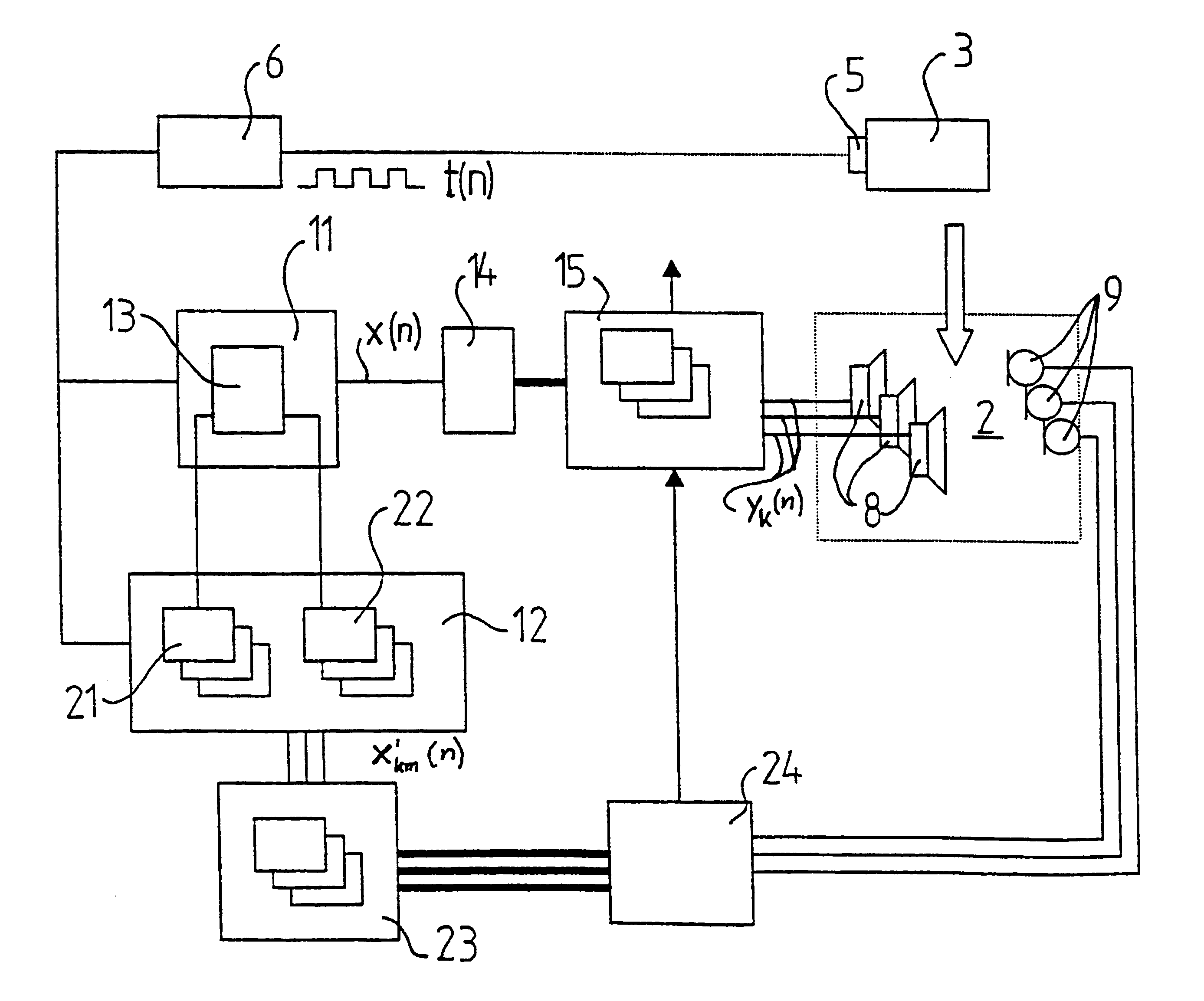Device for active sound control in a space
- Summary
- Abstract
- Description
- Claims
- Application Information
AI Technical Summary
Benefits of technology
Problems solved by technology
Method used
Image
Examples
Embodiment Construction
FIG. 1 discloses a vehicle 1, which defines an inner space 2 in the form of a vehicle compartment. The vehicle 1 includes an engine 3, which drives the vehicle in a conventional manner via a power transmission and driving wheels 4. During driving of the vehicle 1, sound and vibrations, which form a sound field in the inner space 2, are generated. A significant sound source of this sound field is the engine 3, and in the following a device for reducing the sound field, and in particular with regard to sound from the engine 3, is to be described.
Although it in the following example is referred to a vehicle 1, it is to be noted that invention also is applicable for reducing sounds in other connections. In particular, the device according to the invention may be used for reducing sound fields which emanate from a repeating sound source.
The device includes a pulse sensor 5, which is provided on or in the proximity of the engine 3 and arranged to sense a pulse, which is related to the fun...
PUM
 Login to View More
Login to View More Abstract
Description
Claims
Application Information
 Login to View More
Login to View More - R&D
- Intellectual Property
- Life Sciences
- Materials
- Tech Scout
- Unparalleled Data Quality
- Higher Quality Content
- 60% Fewer Hallucinations
Browse by: Latest US Patents, China's latest patents, Technical Efficacy Thesaurus, Application Domain, Technology Topic, Popular Technical Reports.
© 2025 PatSnap. All rights reserved.Legal|Privacy policy|Modern Slavery Act Transparency Statement|Sitemap|About US| Contact US: help@patsnap.com



